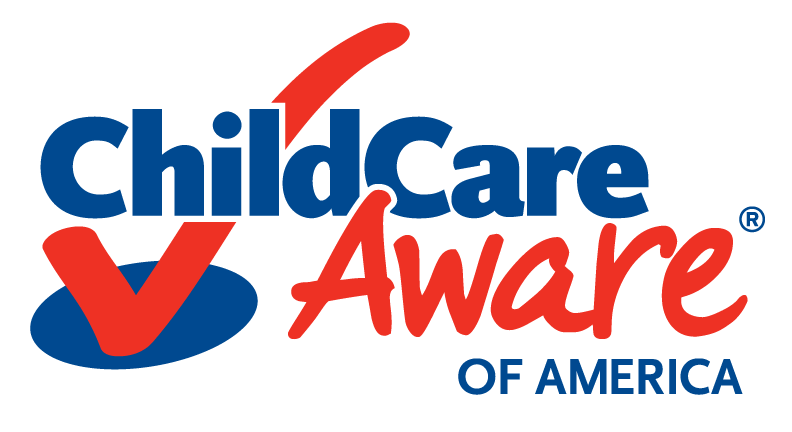

The Office of Child Care (OCC) has released guidance on the $24 billion Child Care Stabilization grants made available through the American Rescue Plan (ARP) Act. The purpose of the guidance is to help states quickly distribute the stabilizations funds to protect and support the existing child care market. As the guidance emphasizes, this funding represents an important opportunity for states to stabilize and rebuild a stronger child care system that meets the diverse needs of all children and families, and of the child care workforce.
This blog provides highlights of the guidance and serves as a quick reference document for stakeholders, including Child Care Resource & Referral (CCR&Rs) agencies. It also includes Child Care Aware® of America’s recommendations for how CCR&Rs can help with the implementation of these funds. This blog and OCC’s guidance are only applicable to Section 2202 of the ARP Act, the child care stabilization grants. Check out OCC’s full guidance document for more information. Stay tuned for additional information from OCC and resources from CCAoA on the other sections of the ARP Act that support child care.
What can American Rescue Plan Act funds be used for in child care?
{% video_player “embed_player” overrideable=False, type=’scriptV4′, hide_playlist=True, viral_sharing=False, embed_button=False, autoplay=False, hidden_controls=False, loop=False, muted=False, full_width=False, width=’1280′, height=’720′, player_id=’49372932611′, style=” %}
States can spend up to 10% of their funds for administrative, supply-building and technical assistance activities. The OCC guidance encourages states to build the supply of non-standard hour care, infant and toddler care, child care in underserved areas, and child care that meets the needs of children with disabilities. It offers examples of activities states can fund to increase the supply of child care, which include but are not limited to providing start-up resources and grants, supporting staffed family child care networks, offering technical assistance on business practices, expanding the use of shared services models, improving administrative data systems, increasing licensing efforts, and growing programs’ participation in quality rating and improvement systems. States can conduct this work on their own or fund intermediaries like CCR&Rs through contracts and grants to perform the work.
The remaining — and majority of — funds must be used for subgrants to eligible providers. The subgrants are intended to stabilize the sector and help providers cover expenses incurred due to COVID-19. Funds can be used to retroactively reimburse expenses or be put toward future expenses. States do not need to require providers to submit receipts for reimbursement.
Child care providers can use stabilization subgrants to cover these expenses:
- Wages and benefits, including increases in compensation for any staff.
- Rent, utilities, facilities maintenance and minor renovations, and insurance.
- Personal protective equipment, cleaning supplies, and other health and safety measures, including background checks and health and safety training for certain providers.
- Equipment and supplies used to respond to COVID-19.
- Material goods (i.e., to facilitate play or safe sleep) or services (i.e., food or transportation) used for the operation of the program.
- Mental health services for children and employees
Which child care providers are eligible to receive stabilization grant funds?
The ARP Act defines eligible child care providers as those who meet the requirements under section 658P(6) of the CCDBG Act or are existing programs as of March 11, 2021 that are licensed, regulated or registered in a state and meet applicable state and local health and safety requirements. This means that the definition of who is eligible will vary in each state.
Unlike the funds that may be set aside for supply-building activities, the subgrants to providers are designed to stabilize existing child care programs, not fund the start-up of new programs. The guidance emphasizes that it is critical for states to ensure subgrants reach a wide range of providers, including center-based and family child care providers, programs that serve school-age children, legally license-exempt programs and certain relative child care providers. The guidance further notes that states should make subgrants available to qualified and eligible providers that have not previously participated in the subsidy system. More information on eligibility is available on OCC’s stabilization grant resource page. (Pages 7-11)
CCAoA recommends that CCR&Rs should address provider eligibility in conversations with their state administrators, and advocate for stabilization subgrants to reach programs in a multitude of settings. In technical assistance and outreach efforts, CCR&Rs can ensure that they reach providers of all types and settings.
Is there guidance on how states should develop their grant application process?
Yes, grant applications must be posted on the state agency’s child care website and should be available in multiple languages, written using plain language and not be overly burdensome for providers to complete. OCC recommends applications be accepted electronically to make submission and data collection easier. States should provide technical assistance and support for providers submitting applications, including real-time support. (OCC guidance, Page 6)
CCAoA recommends that CCR&Rs should convey to their state administrators how they can perform outreach around grant availability and the provision of technical assistance throughout the subgrant process to providers who submit applications.
Are there any conditions placed on providers who apply to receive subgrants?
Yes. Under the guidance, providers receiving stabilization subgrants must certify that they will follow health and safety guidelines, continue to pay full compensation and maintain benefits to staff, and, to the extent possible, provide relief from copayments and tuition for parents struggling to afford child care. (OCC guidance, Pages 12-13)
Are there deadlines by which states must spend funds from the American Rescue Plan Act?
Yes. The guidance gives specific dates for when funds must be obligated and liquidated. OCC plans to hold regular check-ins and provide technical assistance to state agencies to facilitate obligating and spending the stabilization grant funds. (OCC guidance, Page 23):
- December 11, 2021: States must notify the Administration for Children and Families (ACF) if it is unable to obligate 50% of its stabilization funds.
- April 1, 2022: States must notify ACF if there are any remaining funds that will not be obligated by the next deadline, September 30, 2022. These identified unobligated funds will be recaptured by ACF and reallocated to other lead agencies.
- September 30, 2022: All stabilization funds must be obligated.
- September 30, 2023: All stabilization funds must be liquidated.
CCAoA recommends that CCR&Rs be included in any stakeholder input sessions where they can provide policy recommendations that will ensure federal relief funds are spent quickly, equitably, and efficiently to stabilize the sector. CCAoA has developed a list of policy recommendations for you to share with state policymakers and administrators during these conversations.
Are state CCDF plans impacted by this guidance?
Yes. The guidance requires that states describe how the stabilization funds will be used in their upcoming 2022-2024 Child Care and Development Fund (CCDF) state plan, due July 1, 2021. States must use question 4.1.8e of their CCDF plans to provide this information. (OCC guidance, Pages 24-25)
Many states are currently holding public hearings to gather input on their CCDF state plans, as required by law. Providing input during this process can elevate the experiences of families and providers and inform long-term policies that federal relief funds can support to transform the system. If your state’s public comment process has already closed, CCAoA recommends using this new guidance requirement as a hook for continuing or starting conversations with your state administrator about the use of the funds for long-term policy changes.
CCAoA has developed resources on our CCDF Hub Page, which includes sample statements for verbal and written testimony (see “Step Five”) to help guide your CCDF advocacy efforts. This page is also available in Spanish. CCR&Rs can use this information to engage more providers and families in the public input process and use the resources to guide CCR&Rs’ recommendations too.
Are there any reporting requirements for states and providers?
The ARP Act does not include specific reporting requirements for providers receiving subgrants, so any subgrant reporting requirements are at a state’s discretion. The OCC guidance emphasizes that states should balance the need to collect information necessary to ensure funds are being spent correctly while not overly burdening providers. At a minimum, states will be required to collect the following information from providers receiving subgrants: the address, race, ethnicity and gender of the center director or family child care owner; whether the provider is open and available to provide services or is closed due to COVID-19; and how funds were used. (OCC guidance, Page 21)
OCC is still determining state reporting requirements around the ARP Act stabilization funds. States must track stabilization grant funding separately from the state’s regular FY 2021 CCDF funding and be prepared to report on obligations and liquidations. (OCC guidance, Pages 24-25)
CCAoA recommends that CCR&Rs partner with states to answer provider questions on any reporting requirements. They can also help state administrators collect this information and ensure that the reporting forms are not complex or time-consuming for providers to fill out.
Can CCR&Rs play a role in ARP Act implementation?
Absolutely. The guidance strongly encourages states to partner with intermediaries who can support a diverse spectrum of providers in navigating the application process. Intermediaries can be funded to help conduct outreach about the subgrants and application process, as well as manage the distribution of funds. (OCC guidance, Page 16)
As the eyes and ears of America’s child care system, CCR&Rs are ideal partners to help states with ARP Act implementation, as many already have with previous rounds of relief funding. Throughout the pandemic, CCR&Rs provided personal protective equipment (PPE) and sanitization and mitigation supplies; continued to connect parents with child care; and ensured communication flowed between system leaders and providers. They supported the distribution of funds to programs and providers. CCR&Rs took on this added responsibility while they continued to provide technical assistance and training to providers trying to sustain their businesses.
CCAoA recommends that CCR&Rs reach out to their state administrators to share how they are the connectors in many communities across the country and are prepared to help with further implementation efforts. You can learn more about the relief efforts of CCR&Rs during the pandemic in CCAoA’s letter to OCC.
{{cta(‘c043ecda-d886-4e27-90ce-10cccee345a9’)}}


